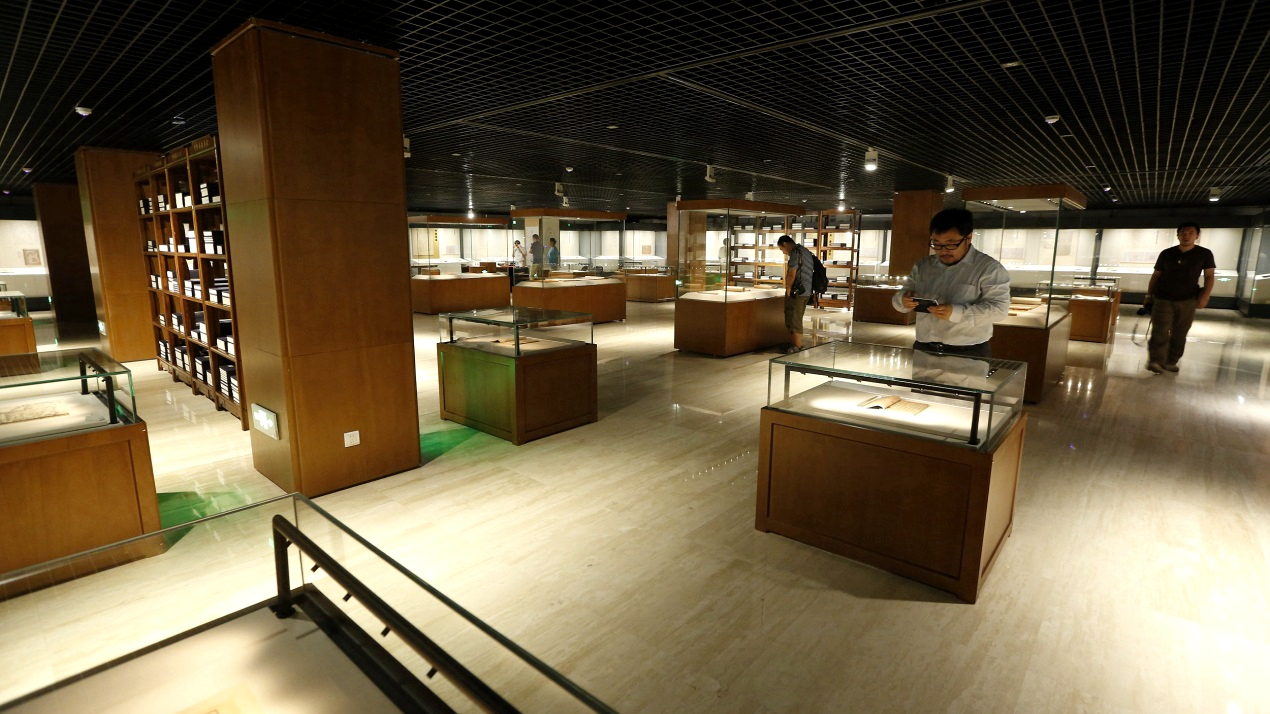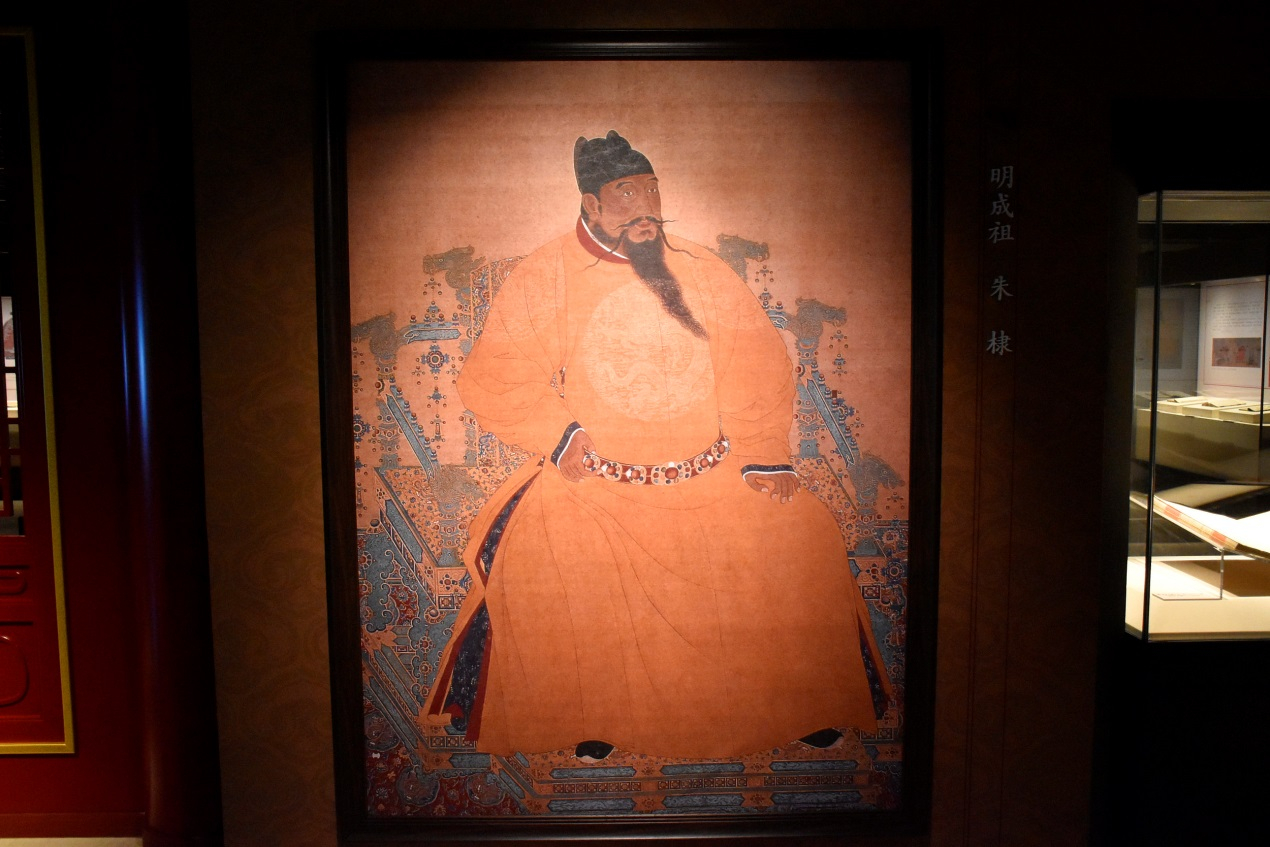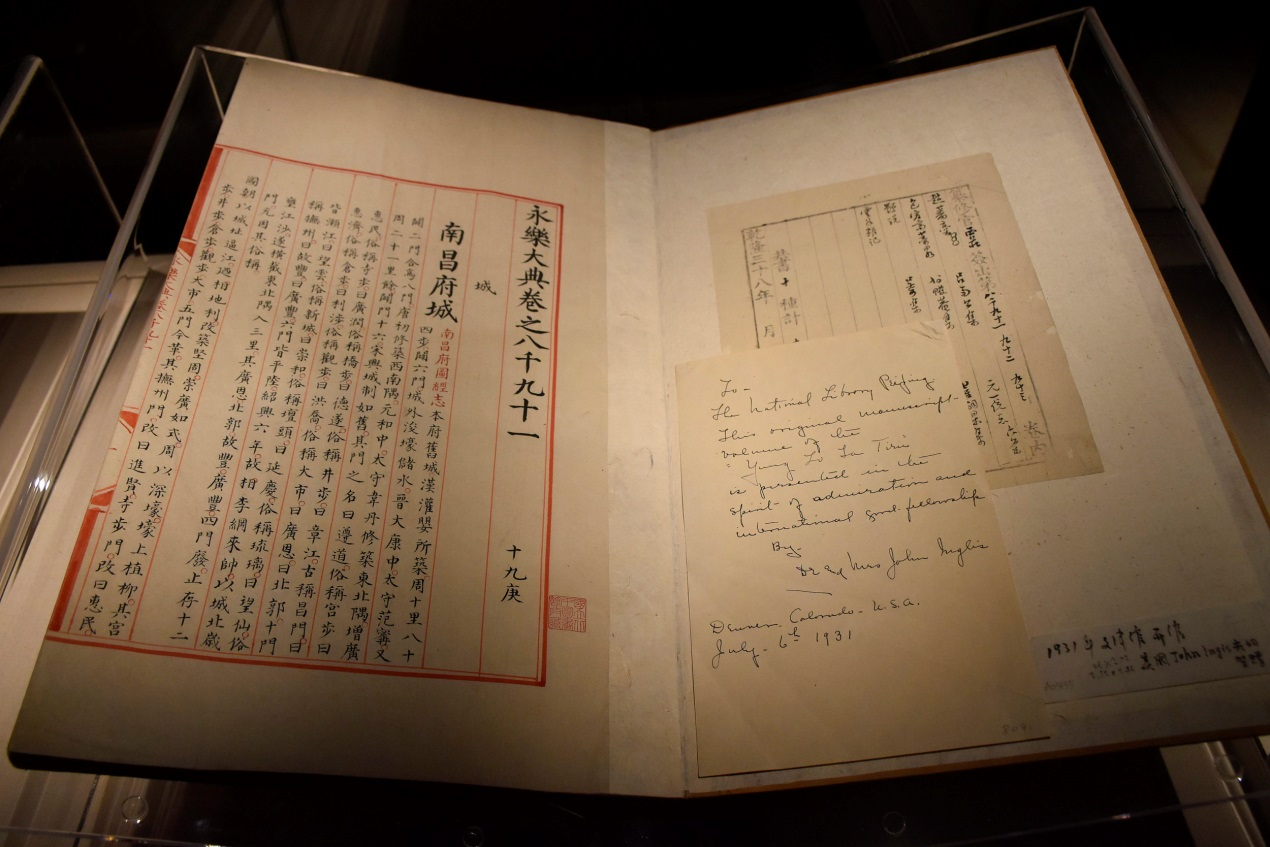

Some may think ancient books are dull because the vocabulary and grammar are too difficult. But that's absolutely not the case for those who want to learn from traditional culture.
The China National Museum of Classic Books is promoting a series of activities during this summer vacation, aiming to shorten the distance between classic volumes and the readers.
The National Museum of Classic Books, the first museum of precious ancient books in China, was officially opened to mark the 105th anniversary of the National Library of China in Beijing in 2014.
A group of students from Beijing Institute of Graphic Communication was among those to experience a traditional rubbing technique. The tablet inscriptions used are carefully selected from the museum collection. The marks of the tablets are seen on the inscriptions so that the students can feel like they are touching the history.

An exhibit at the Yongle Encyclopedia Archive Exhibition. /VCG Photo
"I will get it mounted back home and hang it on the wall. It is a very intimate touch with history, and I feel like I actually take the classic volumes home," a student from Beijing Institute of Graphic Communication said.
The Yongle Encyclopedia was a Chinese compilation commissioned by the Chinese Ming Dynasty emperor Yongle in 1403. It was then the world's largest known general encyclopedia and one of the earliest.
One of the museum's maps illustrates the street scenes, customs and all walks of life of Xuanhuan County, in today's Southwest China's Guangxi Zhuang Autonomous Region. There are more than 150 maps like it in the Yongle Encyclopedia.
One of the volumes illustrates door patterns from pre-Qin times to the Ming Dynasty (1368-1644). The design on the gates of the National Museum of Classic Books is inspired by the same book.
"I had no idea [in] the beginning, and the museum experts showed me the book of door patterns. I saw the ice crystals and tortoiseshell patterns page, and I picked the ice flowers pattern, which is commonly seen on the gates in the Palace Museum. The two patterns symbolize fortune, longevity and eternity. Ancient Chinese culture is really marvelous," Zhu Bingren, a bronze sculptor and national intangible cultural heritage inheritor said.

An exhibit at the Yongle Encyclopedia Archive Exhibition. /VCG Photo
"There is actually a story behind the book of door patterns. The National Library received a letter from Shandong Province in 1982. A farmer named Sun Honglin claimed that he had a volume of the Yongle Encyclopedia and asked us to identify it. That was how we found the book, but unfortunately, the letter is lost," said Zhao Yinfang, a researcher in China National Library’s exhibition department.
The Yongle Encyclopedia has also inspired develop interactive games, such as digital puzzles and calligraphy work that you can print and take home.
Nearly 30 cultural and creative products, including a scarf, portable charger and the four treasures of the study sell very well at the museum.
During the summer vacation, the museum sees flocks of students of all grades every day. The showcase of some 70 original classic books is only one of their favorites.
The "Anthony Browne's Happy Museum" exhibition, which shows 162 original paintings by the Hans Christian Andersen Award winner, British writer and illustrator of children's books, is the top choice among the museum's young visitors.

Copyright © 2018 CGTN. Beijing ICP prepared NO.16065310-3
Copyright © 2018 CGTN. Beijing ICP prepared NO.16065310-3